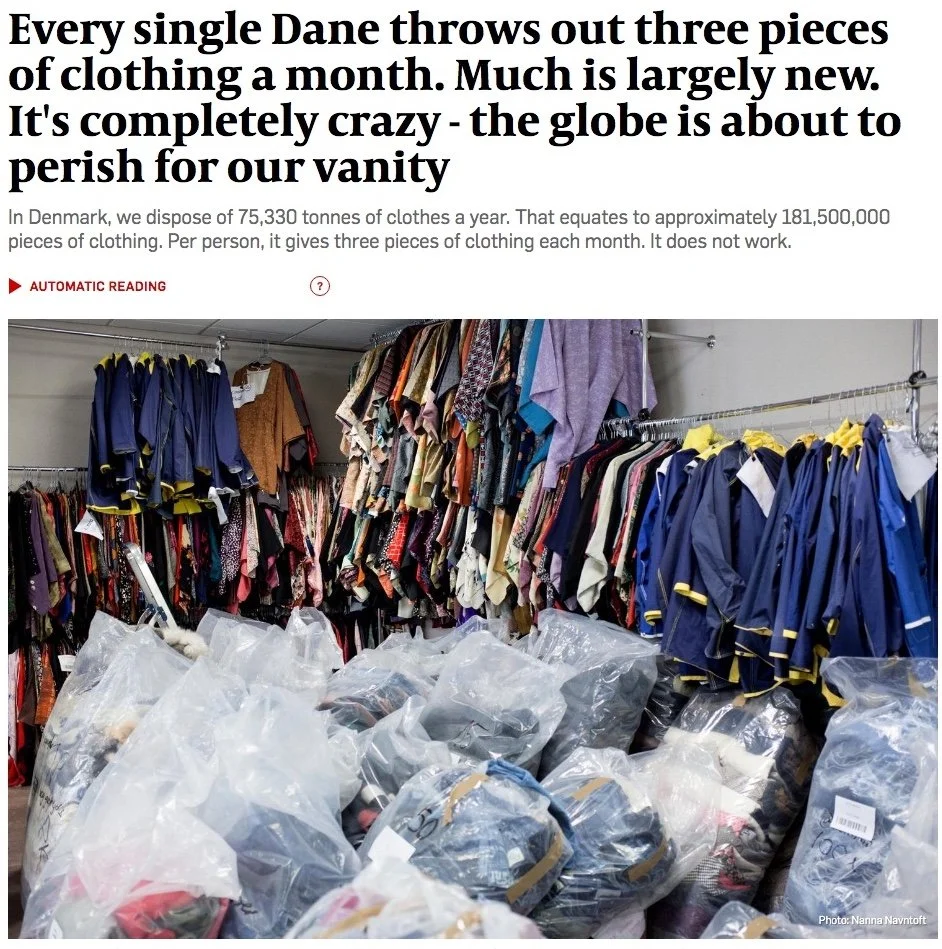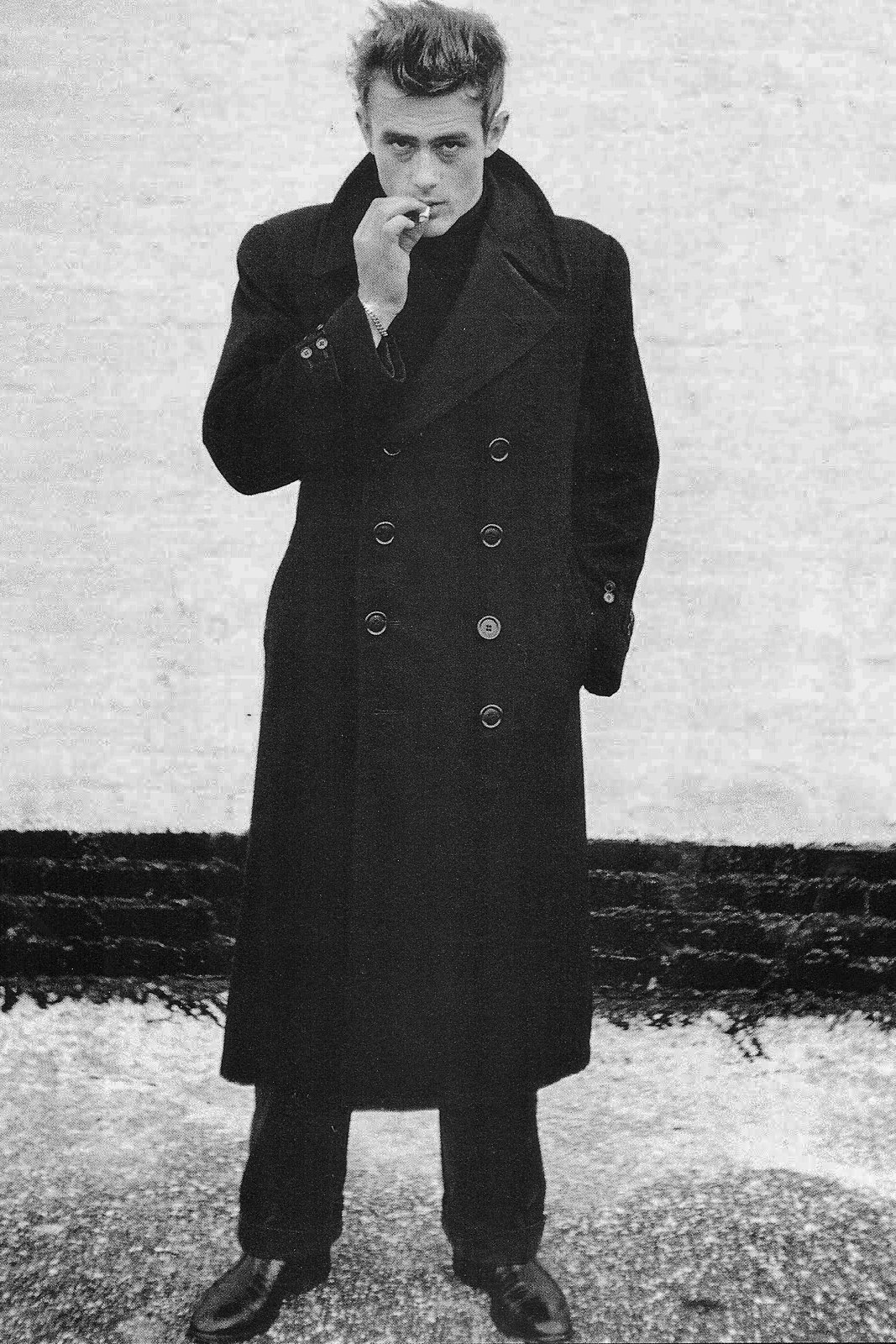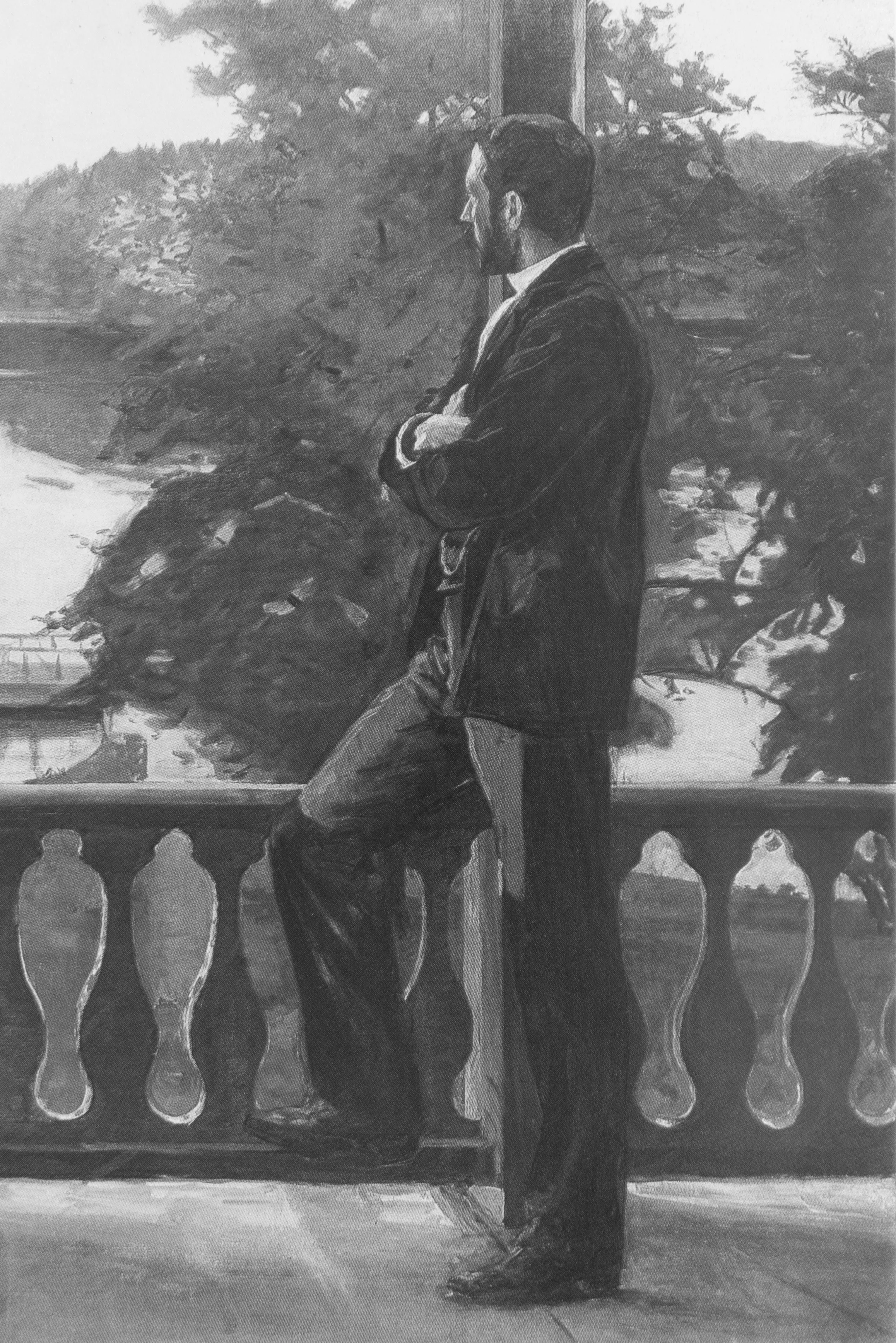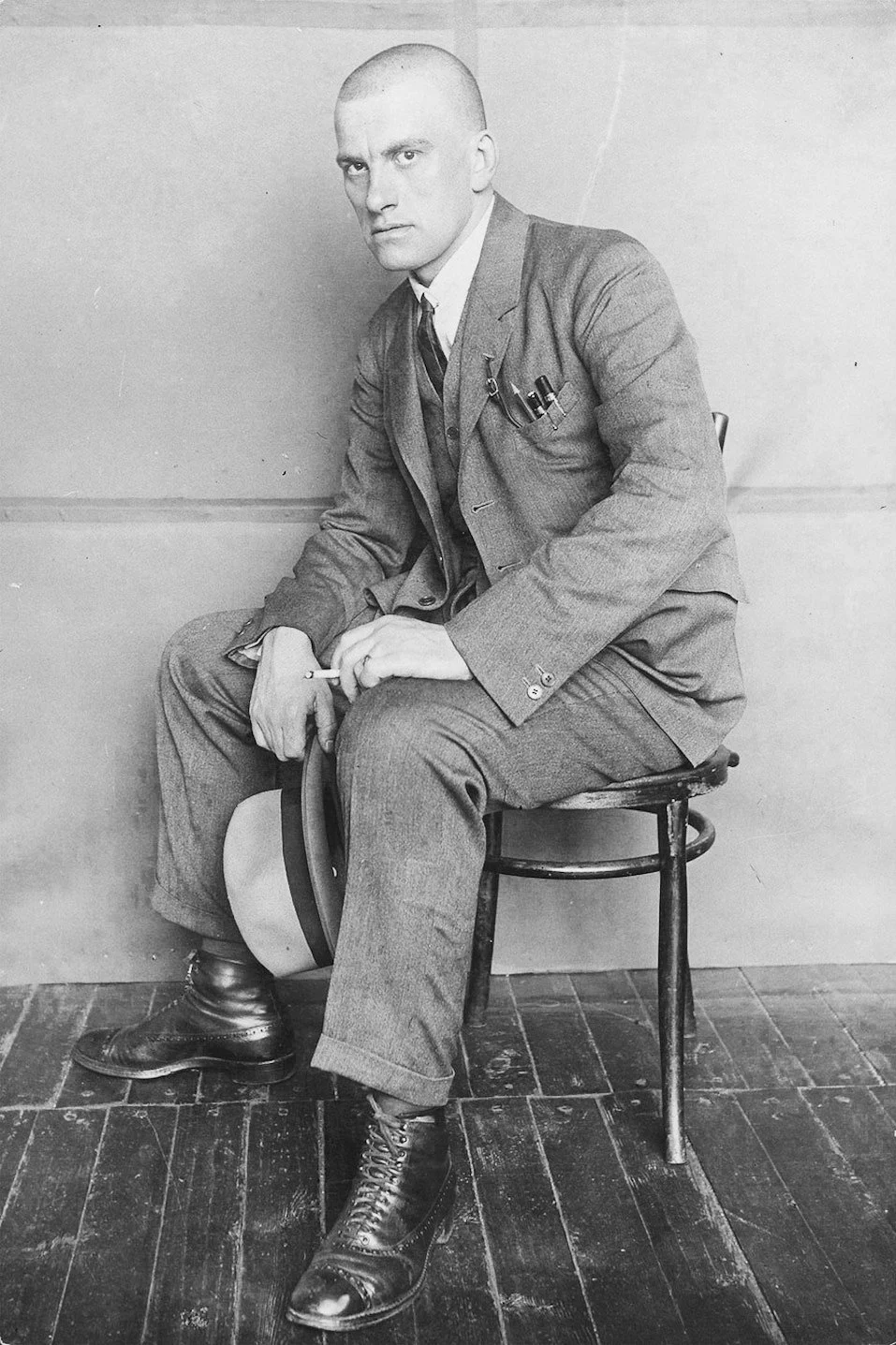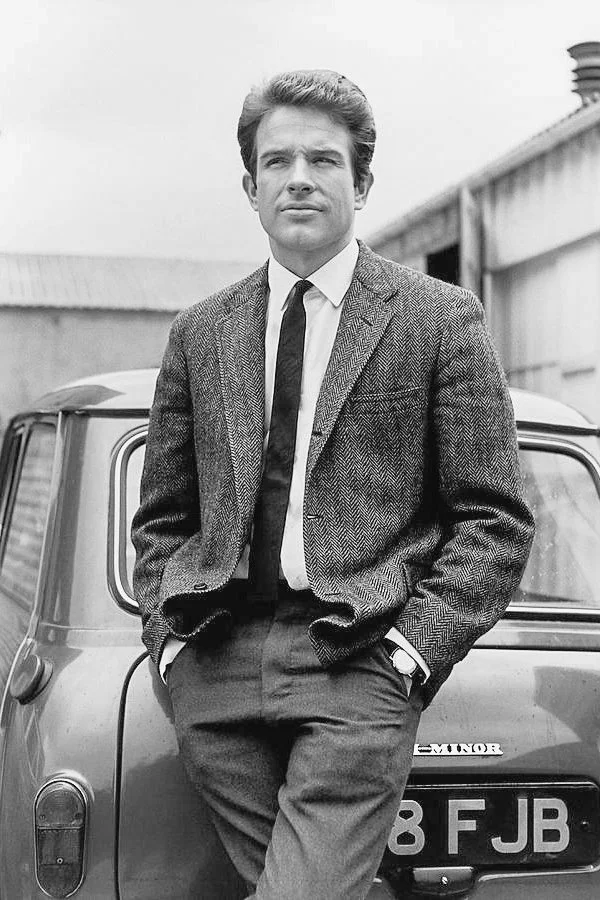throw-away fashion is a threat to our environment
/I talked to Thea Dam Søby - first at FindersKeepers and then again at MUJI in Illums - about the household textiles and the clothes that she makes.
These are items that people not only want to buy but, and perhaps more important, then want to keep. And, with her classes on repairing and patching clothes and textiles, she really is showing a way to tackle the growing problem with our gross consumption of unsustainable clothing. It is important that more people understand that good clothes and good household textiles can have an important extended or second life.
There are well-documented and now more widely-discussed problems with fast fashion and it is obvious that there are serious ethical and environmental issues that have to be tackled .... for a start, UN reports show that the fashion industries produce between 8% and 10% of global CO2 emissions.
People have to accept that now we should buy fewer clothes and what we do buy should not just be made from sustainable fabrics but should be made from materials that will wear well and the clothes should be well made - so made to last - and we have to relearn the skills needed to repair or adapt our clothes.
The impression given in the press is that the main culprits here are young girls driven by influencers to buy masses of clothes that are thrown away after being worn just a few times but actually the problem is much much wider than that.
On average, Danes buy 11 kilos of clothes a year so, for the country, that adds up to a total of 2.1 million tonnes of CO2
Danes purchase 35% more clothes than the world average - the highest rate in the Nordic countries
80% of the clothes thrown away in Denmark have only been used for 30% of their possible life or less
Danes now buy 60% more clothes than they did just 15 years ago and they wear the clothes for half as long
It's interesting that Danes seem to appreciate quality and value for money when they buy clothes but are not yet prepared to pay more for clothes that are sustainable ... so clothes that are made from sustainable fabrics that wear well and clothes that can be repaired.
The other major problem is disposing of all those fast-fashion clothes when people in the west have finished with them. There is a limit to what charity shops can sell on and many man-made fabrics are not worth recycling so that means either incineration or exporting the problem.
If you doubt that it is a problem then look at the short BBC film about clothes that end up dumped in the Atacama desert in Chile.
an article in Politiken by Rachel Kollerup, 6 June 2021
…. quotation from an important article in Politiken on 8 August 2020 by professor Else Skjold Mathilde Aggebo that sets out a new direction and new priorities for the Royal Danish Academy School of Fashion
I have to admit that it is easier for men when it comes to buying clothes.
There are peacocks around who are fashion junkies and some men, who work in fashion or entertainment, take their work style out onto the street but, to be honest, for most men, there is little real pressure to wear the very latest. If there is peer pressure at all, it will be to buy a certain style of trainer or a certain brand logo but men's fashion has barely changed for 150 years. Collars on shirts or jackets might be slightly longer or trousers wider or narrower but that is about it. Fashion labels for men have seasons and market hard their latest designs but most of us could wear last seasons jacket or the trousers from the season before without anyone noticing or caring.
In case you think that I'm exaggerating, I've just put together a few images to make my point.
Count Robert de Montesquiou (1855-1921) by Henri Lucien Doucet (1856-1895) painted in 1879
from August Sander (1876-1964) - Face of Our Time 1929
Unemployed Man 1920
and Man in Hat 1927 Anton Raderscheidt
James Dean 1955
This is what is called a reefer coat … hardly changed for over 150 years
leave out the hats and the winged collars and none of these men would be given even a second glance on Strøget …. the Walking Street
I have the short version of this - the pea coat - with the same collar and double-breasted arrangement of buttons …. just, as I said, shorter
When I was talking to Thea about repairing or repurposing or up cycling clothes, I realised that, by coincidence, the shirt I was wearing was one I bought in New York in 1997. When I got home I checked and found that it cost me 48 dollars .... so relatively expensive back then ... but it's a really good quality cotton and is very well made. It has been worn at least two or three times every month since then and, only now, is there the first sign of wear on the collar. It's plain cream and has a button down collar and OK the collar is maybe just slightly more pointed than shirts in the shops right now but I defy anyone to spot, without having been told, that it's 25 years old. If you don't factor in the flight - I was going to see family - then I've got good value out of that shirt. At a rough guess it's been worn and washed 800 times.
again, ignore the hats but these jackets, trousers and shoes could be found in any department store now
probably about 1890
the man in Nordic Summer Evening painted by Richard Bergh (1858-1919) in 1899
the poet and playwright Vladimir Mayakovsky 1924
Charles Lindberg - with Spirit of St Louis - 1927
Paul Newman and Joanne Woodward filming Paris Blues in 1961
Warren Beatty - photographed for Vogue - 1966
Don’t get me wrong …. I actually enjoy buying clothes but I also hate throwing anything away.
Back when I was in my mid teens, I decided on an appropriate and relatively easy and comfortable style that seems right for me and, basically, I’ve stuck with it .... so, for most days, plain cotton button-down shirts, crew neck jumpers, chinos and short suede or leather boots - often called chukka boots - with a pair of brogues for more formal times. It’s sort of toned down preppy. Ralph Lauren Purple but avoiding the loud checks. I've got a couple of plain suits and some very nice ties but since moving to Copenhagen I've worn a suit once and a tie maybe five times and every time felt over dressed.
OK - I’m boring but generally neat and clean - even if I end up looking like 95% of all other European or American men. But then surely that's the point for men - to fit in - and that has served me well enough.


